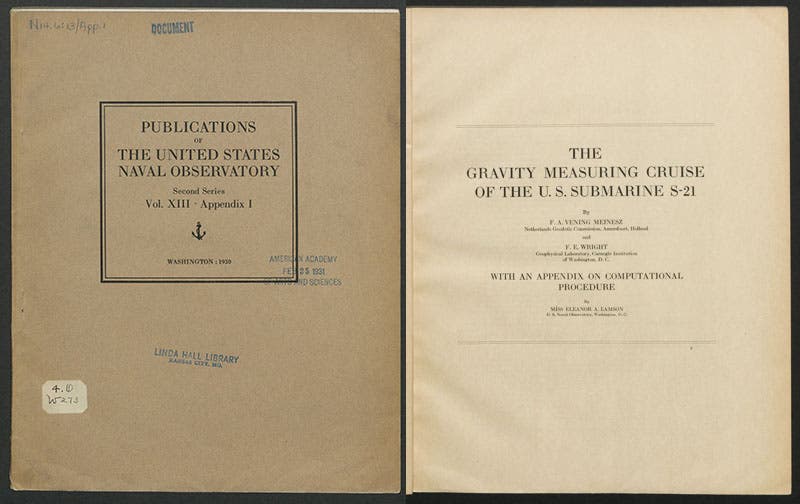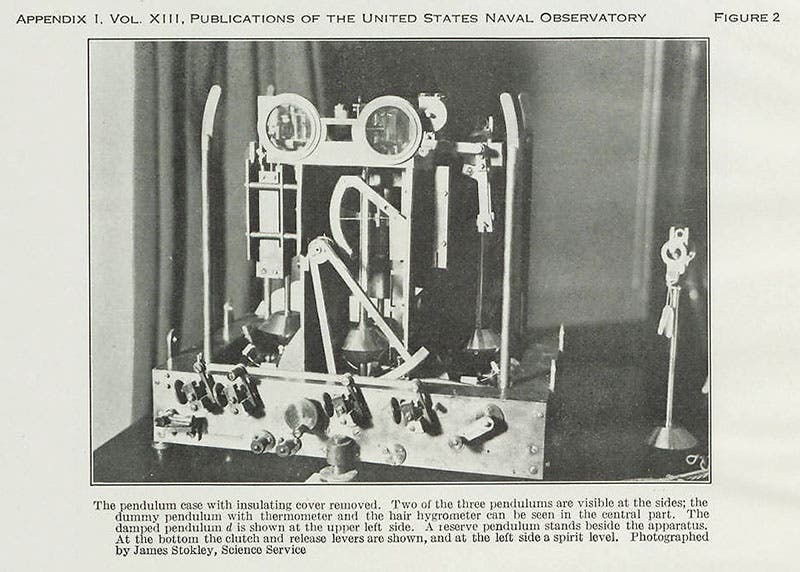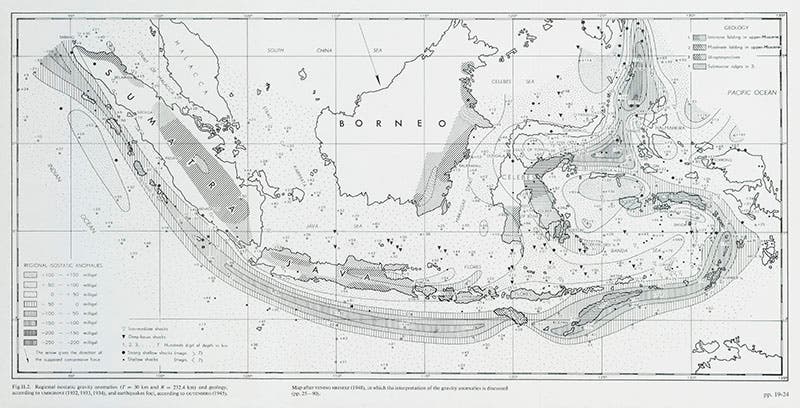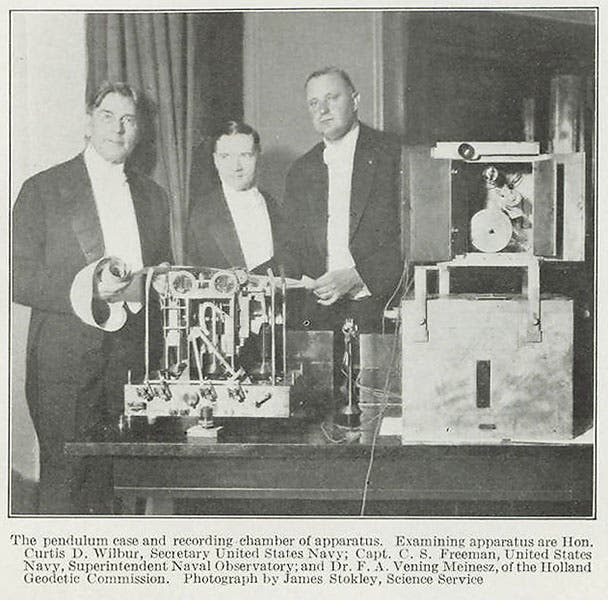Scientist of the Day - Felix Vening Meinesz
Felix Vening Meinesz, a Dutch geophysicist, was born July 30, 1887. He was interested in measuring variations in gravitational attraction on the earth's surface, especially as one goes from place to place. There were existing instruments, called accelerometers, to do this, but they were very sensitive to outside vibrations of any kind, even ocean waves beating on the shores and dikes miles away. Vening Meinesz invented a much better accelerometer, which used pendulums to measure the acceleration due to gravity, and came to be called a gravimeter. It had three pendulums swinging back and forth out of phase, and the net result was that all the disturbing forces were cancelled out except that of gravity. Variations were measured by light beams that bounced off the pendulums and, by a system of mirrors, produced interference patterns, similar to the way that Michelson and Morley had attempted to measure the speed of the Earth through the ether in 1887, except that Vening Meinesz’s results were captured on continuous strips of film.
Vening Meinesz had great success at various land stations in Holland, but two-thirds of the earth’s surface is underwater, and he very much wanted to take his instrument to sea. He did so, in 1922, but there was so much disturbance from waves and ship motion that his gravimeter was useless. It was suggested that he try a submarine. So he made an instrument that was portable enough to fit into a 1920s submarine. Because of its bronze and copper sheathing (and because when it was on board, all the sailors received a monetary bonus), it came to be called the Golden Calf. Over the course of 16 years, from 1923 to 39, Vening Meinesz make extended subsurface voyages in 9 different Dutch submarines. The vessel would lie motionless 100 feet down, while Vening Meinesz took his readings, and he did this thousands of times, building up an incredible and unique database.
Many of these expeditions were to areas in what used to be the Dutch East Indies, along the deep trenches that lie below Java and Sumatra. Vening Meinesz soon discovered what he called “negative gravimetric anomalies”, meaning that the gravitational acceleration over the trenches was less than normal. Since on a passive earth there should be no such anomalies, this meant that the trenches were active geological sites. This was some of the first real evidence for plate tectonics, although not until the 1960s would it be realized that the trenches are the sites of subduction of tectonic plates, where the crust and upper mantle of the Earth are being pushed down, producing the negative anomalies. One of the maps Veining Meinesz produced from his measurements in 1948 (fifth image) looks eerily similar to maps published since the 1970s depicting global subduction zones.
The results of Vening Meinesz's measurements on Dutch submarines were published in 4 volumes by the Dutch Commission for Geodesy, a set we unfortunately lack in our collections. But in 1928, Vening Meinesz was invited to load his Golden Calf onto an American submarine, the S-21. They journeyed down into the Bahamas, Vening Meinesz took a number of readings with his gravimeter, and the results were published in a government document by the U.S. Naval Observatory in 1930. We are very well supplied with government documents here at the Library, at least the scientific ones, and we found this one in our collections (second and third images).
It includes photographs of the gravimeter in place in S-21 (first image), and different views of the instrument with its covers removed (fourth image). One photo shows the Secretary of the Navy, the Superintendent of the Naval Observatory, and Vening Meinesz on the right, admiring the gravimeter and the recording apparatus (sixth image). Vening Meinesz was 6'6" tall, and must really have loved navigating the low bulkheads of submarine space.
The Golden Calf is still with us, on display at the Science Center Museum of Delft University of Technology (seventh image). It survived better than the submarines that carried it around the globe, many of which perished during the Second World War.
Dr. William B. Ashworth, Jr., Consultant for the History of Science, Linda Hall Library and Associate Professor, Department of History, University of Missouri-Kansas City. Comments or corrections are welcome; please direct to ashworthw@umkc.edu.










![Columbine, hand-colored woodcut, [Gart der Gesundheit], printed by Peter Schoeffer, Mainz, chap. 162, 1485 (Linda Hall Library)](https://assets-us-01.kc-usercontent.com:443/9dd25524-761a-000d-d79f-86a5086d4774/3829b99e-a030-4a36-8bdd-27295454c30c/gart1.jpg?w=210&h=210&auto=format&fit=crop)
